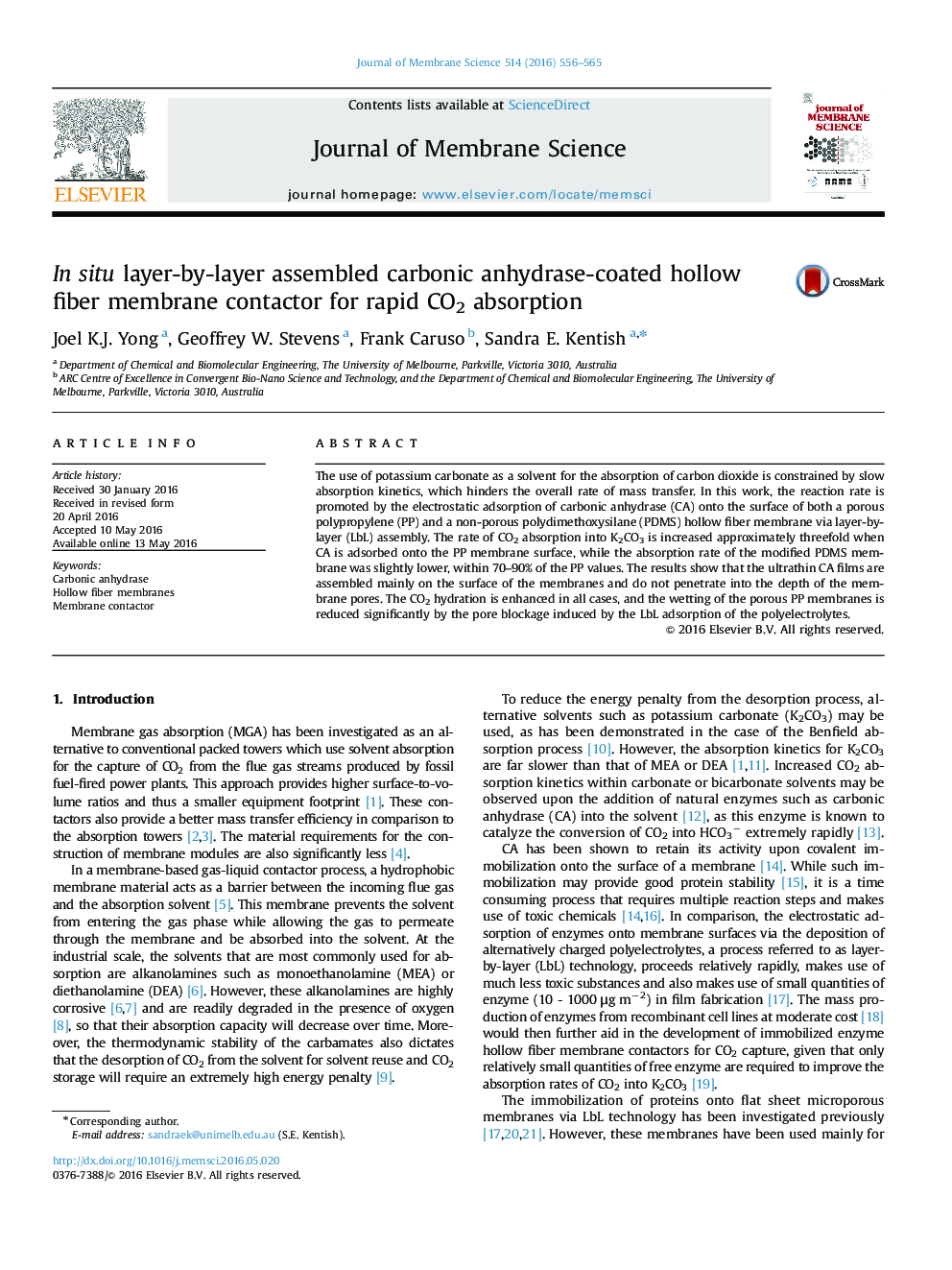| Article ID | Journal | Published Year | Pages | File Type |
|---|---|---|---|---|
| 632310 | Journal of Membrane Science | 2016 | 10 Pages |
Abstract
The use of potassium carbonate as a solvent for the absorption of carbon dioxide is constrained by slow absorption kinetics, which hinders the overall rate of mass transfer. In this work, the reaction rate is promoted by the electrostatic adsorption of carbonic anhydrase (CA) onto the surface of both a porous polypropylene (PP) and a non-porous polydimethoxysilane (PDMS) hollow fiber membrane via layer-by-layer (LbL) assembly. The rate of CO2 absorption into K2CO3 is increased approximately threefold when CA is adsorbed onto the PP membrane surface, while the absorption rate of the modified PDMS membrane was slightly lower, within 70-90% of the PP values. The results show that the ultrathin CA films are assembled mainly on the surface of the membranes and do not penetrate into the depth of the membrane pores. The CO2 hydration is enhanced in all cases, and the wetting of the porous PP membranes is reduced significantly by the pore blockage induced by the LbL adsorption of the polyelectrolytes.
Related Topics
Physical Sciences and Engineering
Chemical Engineering
Filtration and Separation
Authors
Joel K.J. Yong, Geoffrey W. Stevens, Frank Caruso, Sandra E. Kentish,
